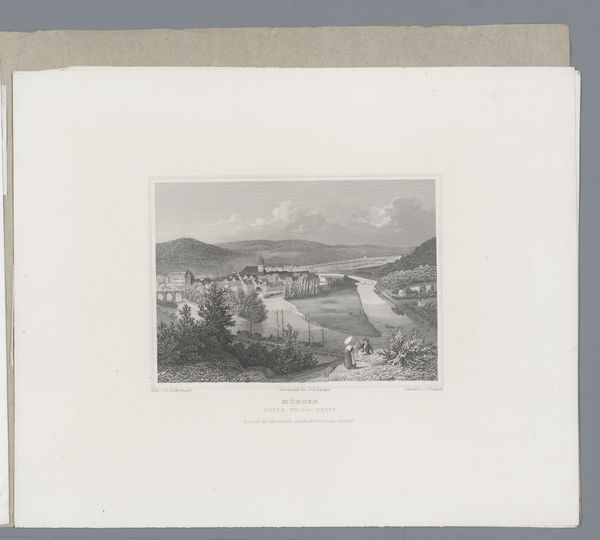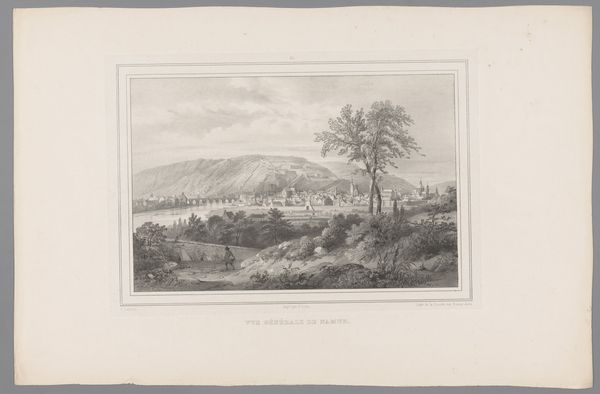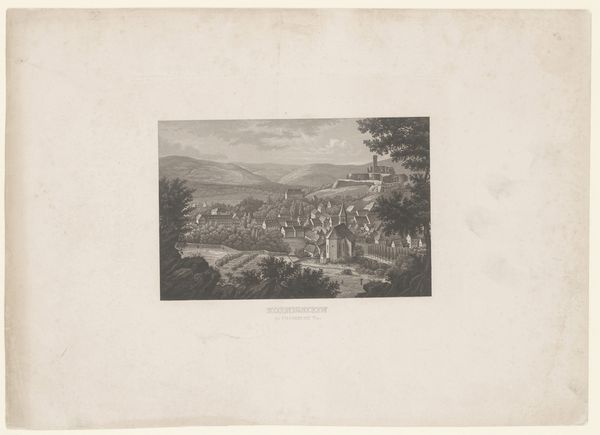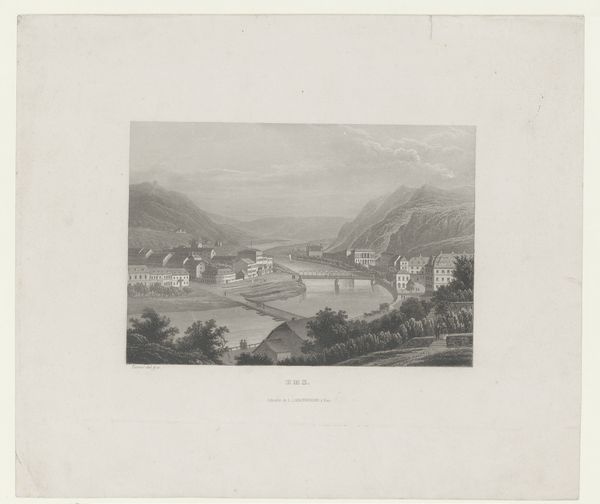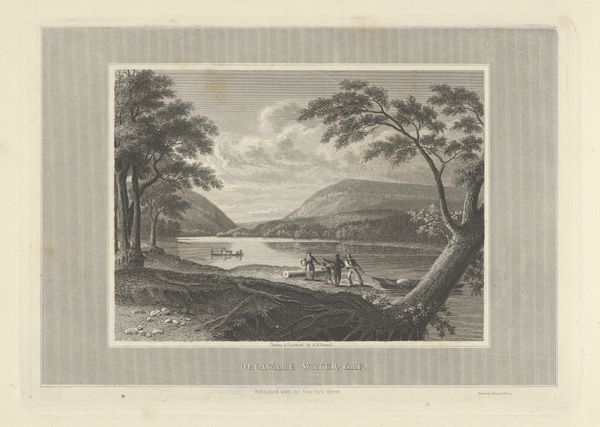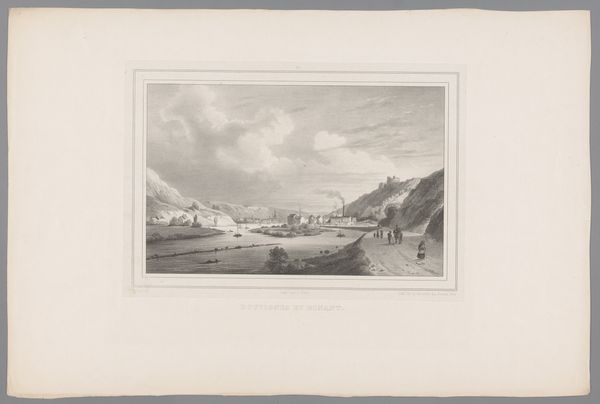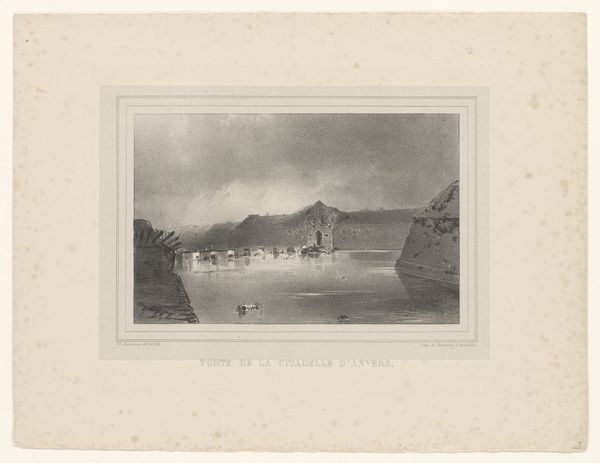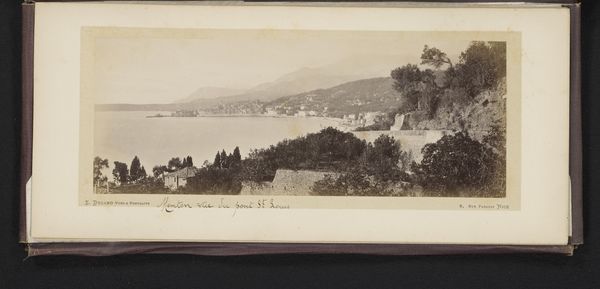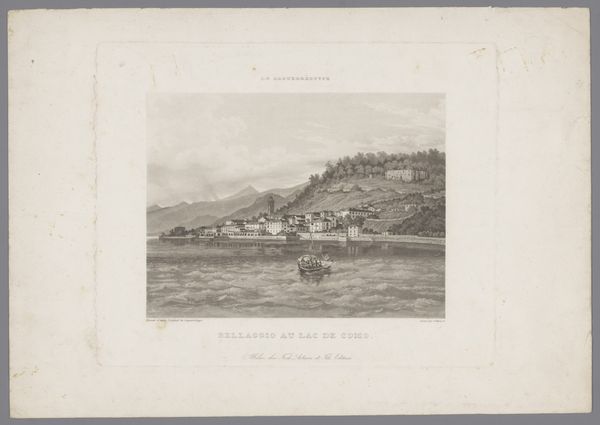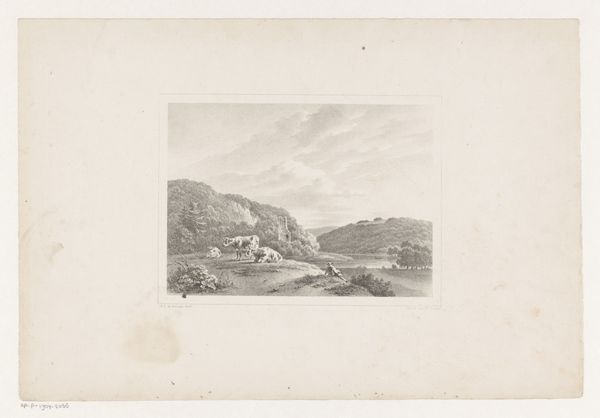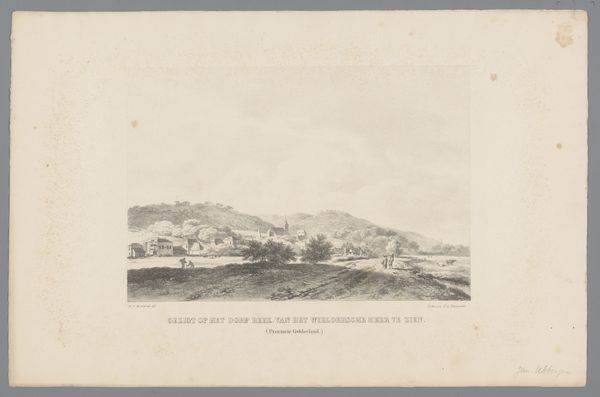
print, engraving
# print
#
landscape
#
river
#
engraving
Dimensions: height 363 mm, width 552 mm
Copyright: Rijks Museum: Open Domain
Curator: Standing before us is "View of Profondeville with draughtsman at work", dating from 1839-1841, attributed to Paulus Lauters. It's a landscape presented as a print and created via engraving. Editor: It's delicate. A calm wash of grey tones... the kind of scene you'd almost expect to hear whispered instead of announced. Melancholy comes to mind, if I'm being honest. Curator: Melancholy... I think it is. Engraving is an intricate process involving a burin, a specialized tool, to cut lines into a metal plate. This would then be inked and printed, producing the final image you see here. The precision necessary seems appropriate to the tone of nostalgia that you describe. Editor: Exactly! It strikes me how dependent Lauters must have been on the engraver's skill to truly render that kind of quiet, overcast mood. And looking at the detail in the distant buildings... did that process feel almost industrial, converting a personal vision into a reproducible object for wider consumption? Curator: That's a very perceptive reading! This print medium allowed for a broader audience and, as you noted, was certainly shaped by production methods. We have the figures clustered mid-ground that guide your eye towards the little boatmen on the river Sambre, mirroring the artist working there on the shore. There’s also the foreground foliage rendered with such exquisite refinement. It draws us into his serene world. Editor: Those workers give scale to the overall endeavor and introduce a fascinating contrast between leisure and labour in a quickly industrialising landscape. It suggests to me that the river wasn't merely a scenic vista. The waterways would have served crucial economic functions. A vital artery for commerce, even though he romanticises the scene. Curator: Absolutely! And maybe there's a hint of Romanticism even in that idealized view, as you say. In a world being reshaped by machines and mass production, there is perhaps something wistful in the emphasis on the lone artist capturing the beauty of the natural world. Editor: That interaction between artist, process, and a changing world really fascinates me. It shows how our art encodes, reflects, but maybe, inevitably, critiques, the means and methods of its making. Curator: Thank you for illuminating it through that lens. It enriches how we perceive it entirely.
Comments
No comments
Be the first to comment and join the conversation on the ultimate creative platform.
